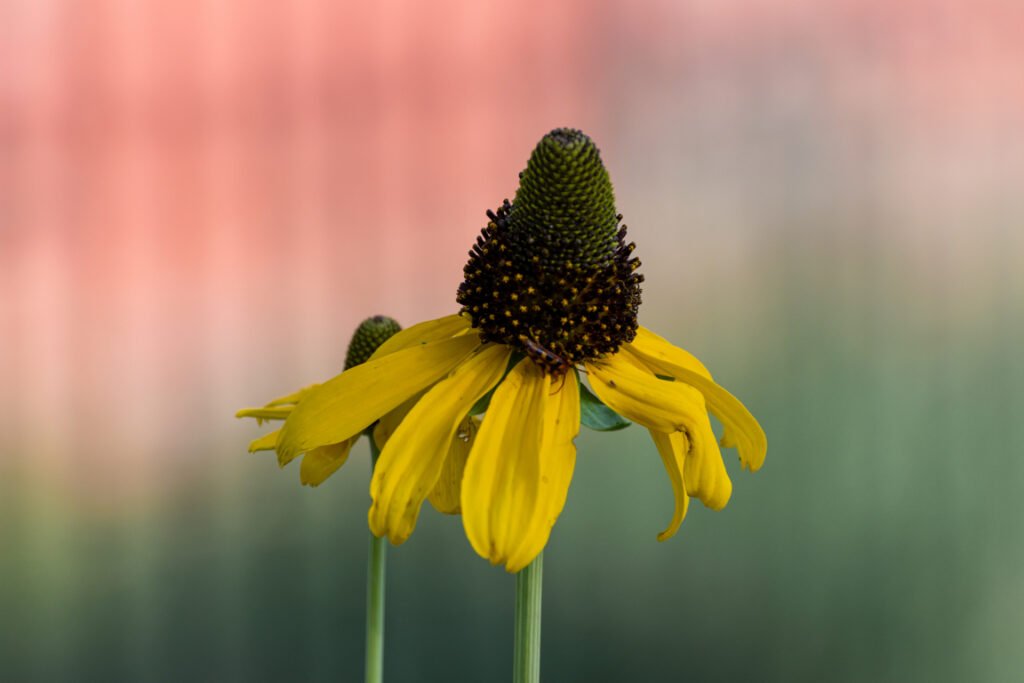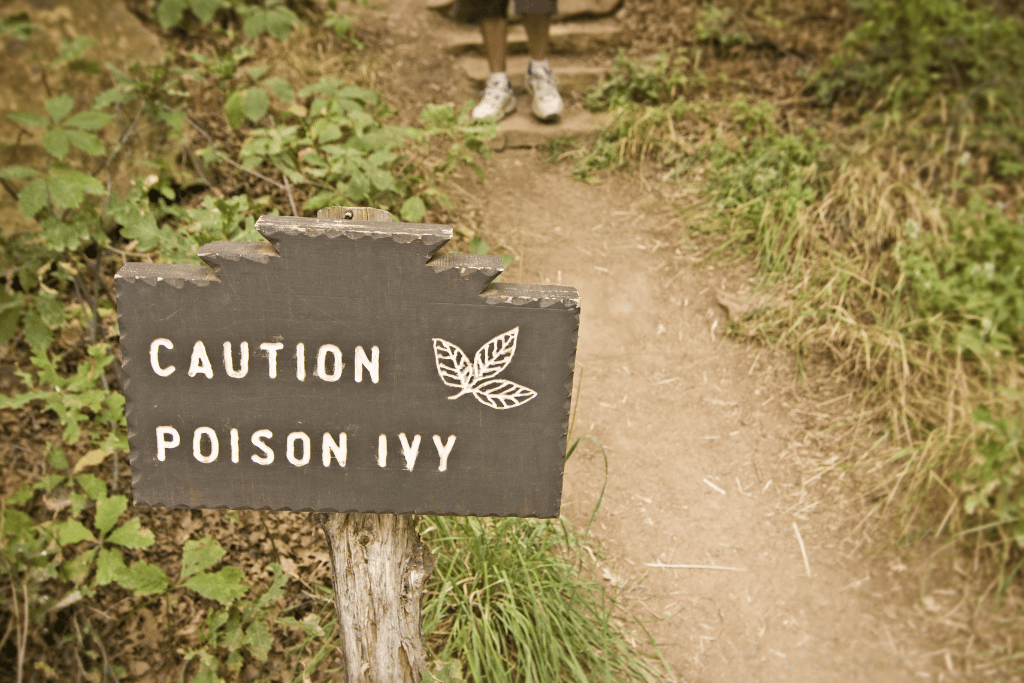
Whether you’re a plant expert or someone who knows a little about plants, you’ve probably already heard of poison ivy. This isn’t a plant you need to seek out; harrowing tales about it will likely have found you anyway!
And well, I’m here to tell you that those tales don’t lie.
Yup, poison ivy is one of the most common poisonous plants out there, and they’re dangerous.
Plus, they’re everywhere. What’s even worse is that there are lots of other plants that look like poison ivy but aren’t. Some dangerous, others, not so much!
That’s why it’s important to know exactly what a poison ivy plant looks like and know your way around other plants that may look like it too!
That’s exactly what I’m here to talk about in this post!
After making your way through this blog post, you’ll know exactly what poison ivy looks like and the other plants out there that might seem like poison ivy, and which ones you should avoid!
What Does Poison Ivy Look Like?
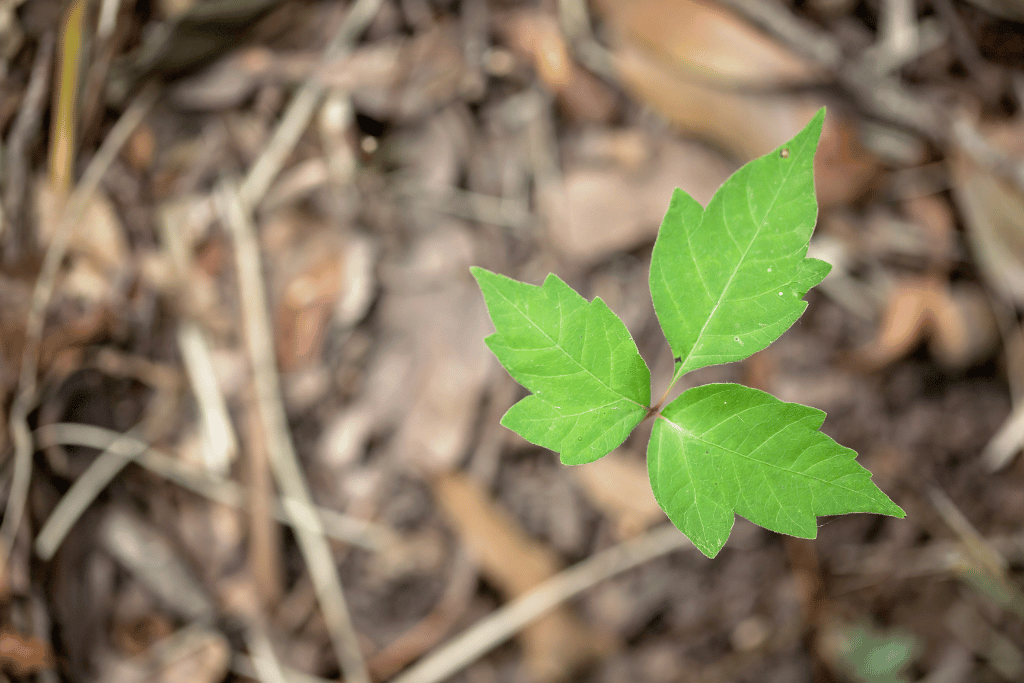
Before we get into the look-alikes that suffer from a bad reputation just because they look like poison ivy, let’s get the main crux of it all out of the way.
What does the real culprit look like?
Identifying poison ivy can be tricky because there are a few plants that look similar and can easily be mistaken for poison ivy.
Poison ivy is a perennial plant that grows as either a vine or a shrub. Its leaves are typically shiny and green, with three leaflets that can be smooth or jagged on the edge. All poison ivy plants have yellow-green flowers in the spring and whitish berries in the fall.
The first thing to look for when identifying poison ivy is its three leaflet. That should be your first Also, poison ivy leaves are typically more pointed than other plants, with jagged edges. Plus, poison ivy vines have clusters of aerial roots along the stem.
The shrubs of this plant can grow upto six feet high, but it also grows as a vine!
When poison ivy is in a vine form, it can grow up trees or other structures. The vines are typically tough and woody and usually have hairs or “hairs” along the stem.
Poison ivy leaves can also be shiny; if you run your hand over them, they may feel waxy to the touch (But try not to touch them and use the visual cues instead, because that’s where things can get really itchy).
Because poison ivy is so common and looks a lot like other plants, it’s important to be able to identify poison ivy correctly. Always look for the three leaflets on a poison ivy plant, as well as its jagged edges and aerial roots (if in vine form).
Another thing to note is that there aren’t that many plants that look like poison ivy with yellow flowers, so if it seems like poison ivy but doesn’t have the little flowers, it’s probably another type of plant!
Keep an eye out for poison ivy’s yellow-green flowers in the spring and whitish berries in the fall. With a bit of knowledge and practice, you’ll be able to spot poison ivy before it spots you!
10 Plants that Look Like Poison Ivy But Aren’t
It’s important to be able to recognize poison ivy and its lookalikes so you can tell the difference between a harmless plant and one that might cause an allergic reaction.
There are lots of nonpoisonous plants that look like poison ivy out there. Knowing what these lookalikes are is key if you have sensitivity to poison ivy.
Let’s take a look at some of the most common poison ivy doppelgangers.
Box elder
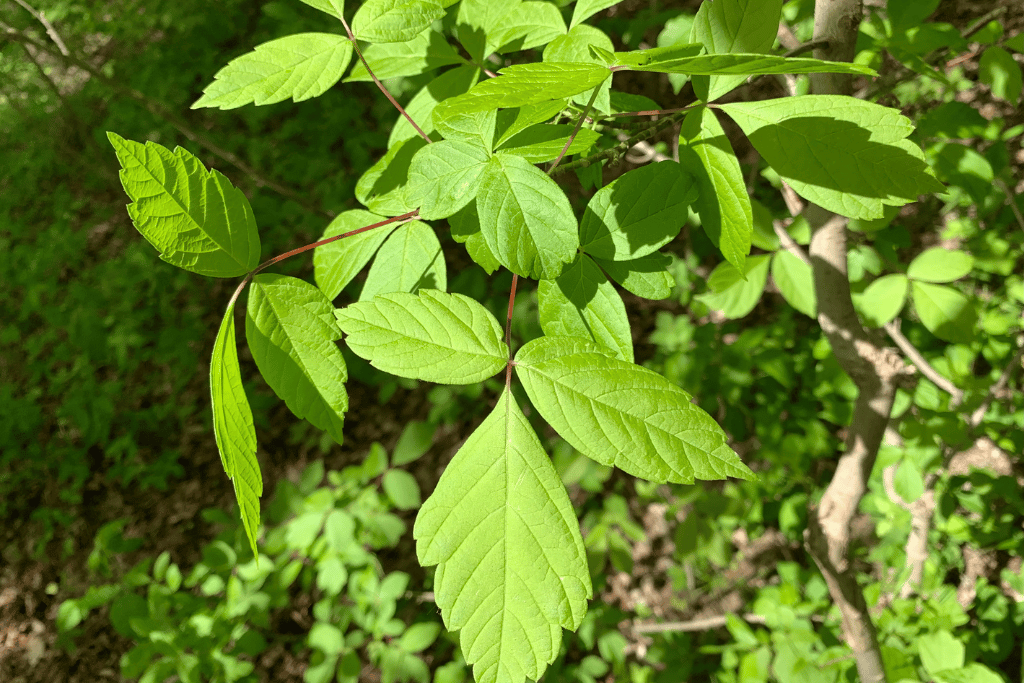
It’s easy to mistake poison ivy for the box elder tree when they’re still young since their leaves have a similar shape and veining.
However, you can tell them apart by looking at how their leaves are positioned – poison ivy leaves alternate, while boxelder leaves grow opposite each other on the stem. Box elder stems also usually have a bluish tinge, while poison ivy has reddish-colored stems.
As box elder trees mature, their trunks become more defined, and they develop more leaflets than poison ivy.
Box elders are safe – they’re an incredibly adaptable tree species that can survive in a wide range of conditions.
Plus, they make great additions to any garden, since they require little maintenance. Making them a great, carefree option that won’t have you worrying about a rash!
Strawberry
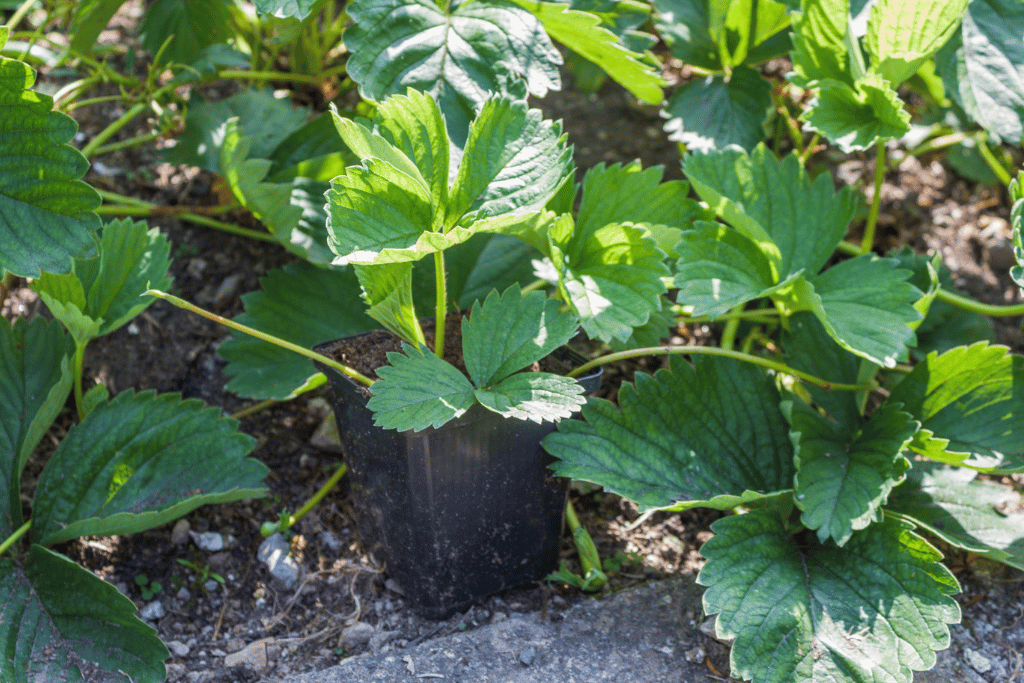
Strawberry plants are also very easily confused with poison ivy, but there are several ways to tell them apart.
The poison ivy plant has three leaflets that are each pointed at the end, giving it a distinctive shape. The wild strawberry leaves, on the other hand, have a more jagged and rounded edge to them.
The vein pattern of poison ivy is also different from that of strawberry plants, as poison ivy has a more intricate pattern.
Another way to tell poison ivy apart from wild strawberries is by examining the stems and petioles. Poison ivy stems and petioles are smooth and feature small hairs scattered along them, while the stems and petioles of wild strawberry plants are more fibrous and have longer hairs.
The poison ivy plant also has a higher number of leaflets, usually four to nine per stem, while wild strawberries typically only have three leaflets per stem.
A third difference between poison ivy and wild strawberry plants is the color of the leaves. Poison ivy leaves tend to vary from light to dark green and may even exhibit a reddish hue when young.
Wild strawberries, on the other hand, typically have a yellow-green tinge to them.
Lastly, poison ivy plants will produce white berries late in the summer season, while wild strawberry plants produce larger red fruits that are edible.
It’s important to note, however, that these red fruits may also be produced by the mock strawberry plant (Duchesnea Indica), which also looks similar to poison ivy.
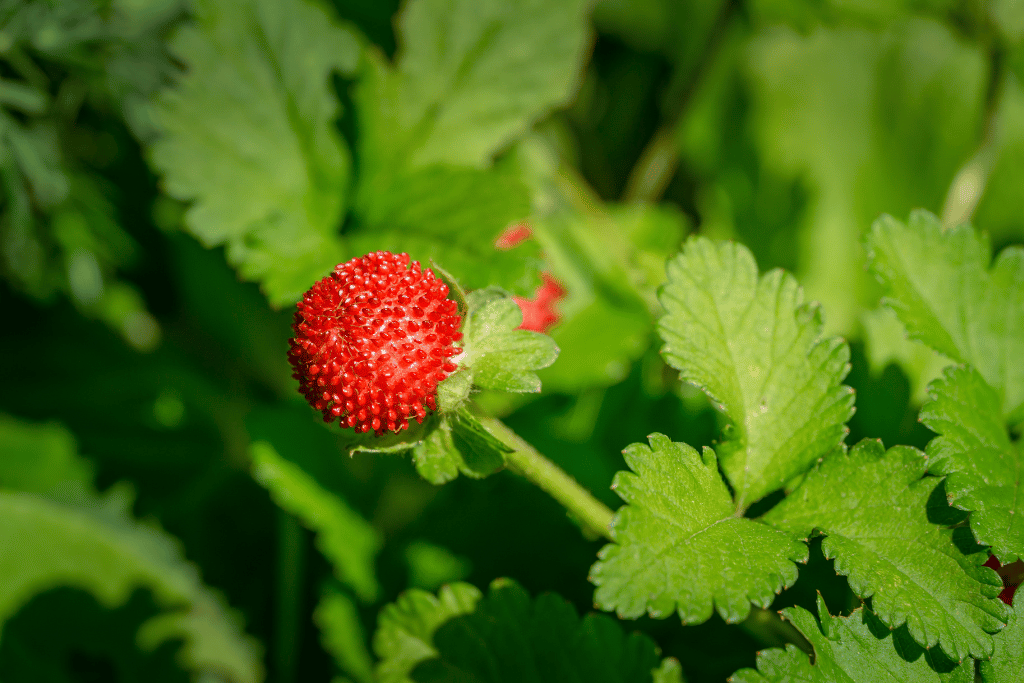
This type of poison ivy lookalike features a yellow tinge to its leaves and should not be consumed as it tastes quite unpleasant, but it’s still not exactly poisonous. (The taste might make you want to run for the hills still, though)
So keep an eye out for both types of strawberry plants because what you think is a poison ivy might just be one of these!
Blackberry
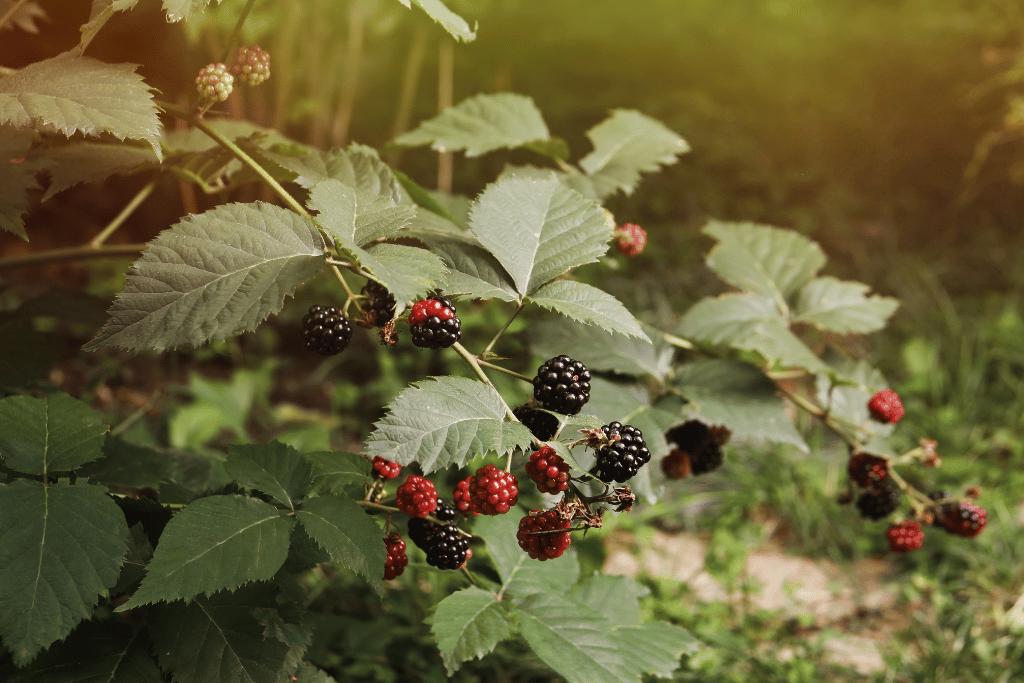
Blackberry makes for a great addition to any garden – just be careful not to mistake it for poison ivy.
The two plants have similar leaf shapes, but there are some key differences between them that can help you tell them apart.
First off, blackberry plants are one of the plants that look like poison ivy with thorns, but since poison ivy doesn’t actually have thorns, if you’re seeing thorns, you’re in the clear!
If the plant has no thorns, you can look more closely at the leaflets. Blackberry leaflets usually come in groups of four or five, while poison ivy will always have three leaflets.
Then if the plant is producing fruit, it’s an easy win – poison ivy berries are small and lightly colored, while blackberries are large and black.
So with a little bit of observation and identification, you can easily tell poison ivy apart from blackberry plants. And if it turns out to be a blackberry plant, lucky you – just leave them to grow, and they will provide you with a plentiful harvest in fall!
No rashes and berries, sounds like a win win!
Raspberries
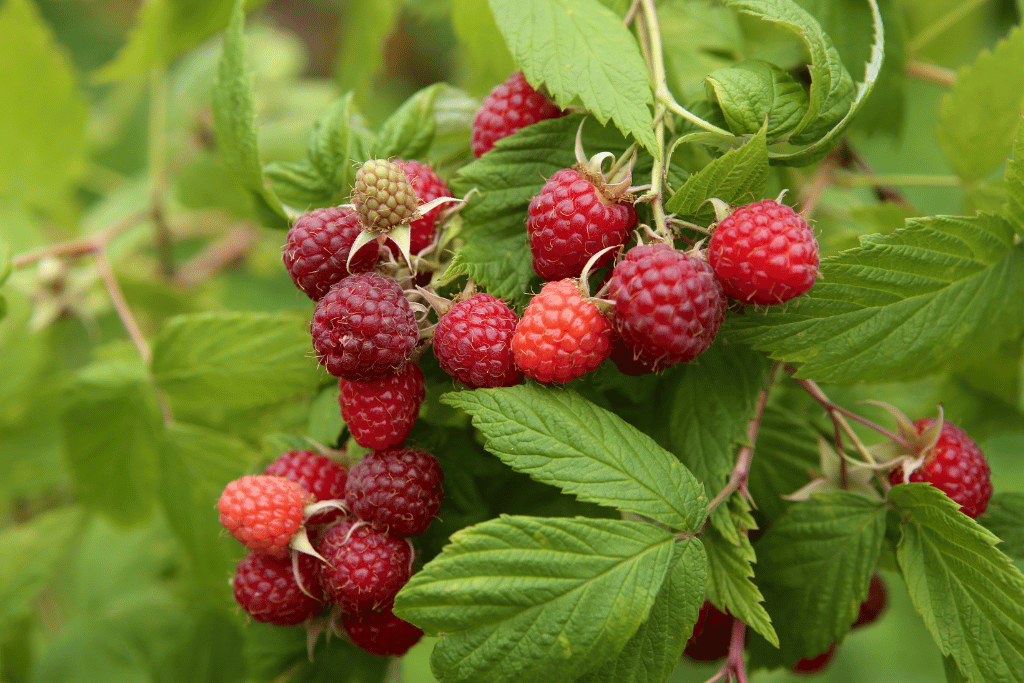
If you’re out foraging and come across a bush with poison ivy-like leaves, it could very likely be a raspberry bush instead!
While poison ivy and raspberries are both members of the berry family, there are some key differences that can help you tell them apart.
First off, poison ivy’s leaflets have jagged edges, while raspberry leaflets always have serrated edges that are much more pronounced.
Additionally, poison ivy leaves are smooth to the touch, whereas wild raspberries will have a rougher texture thanks to their deep veining.
Plus, poison ivy leaflets have a darker tone, whereas raspberry leaves turn to a greyish color when you flip them over.
Finally, you can tell them apart by the shape and color of their berries – they start out light in color, but ripen to a deep red.
After you’ve gone through the plant thoroughly and are absolutely sure it’s not poison ivy, feel free to pick the ripe berries and enjoy! Just be sure to clean them thoroughly before eating, and you’ll be all good!
Hog Peanut
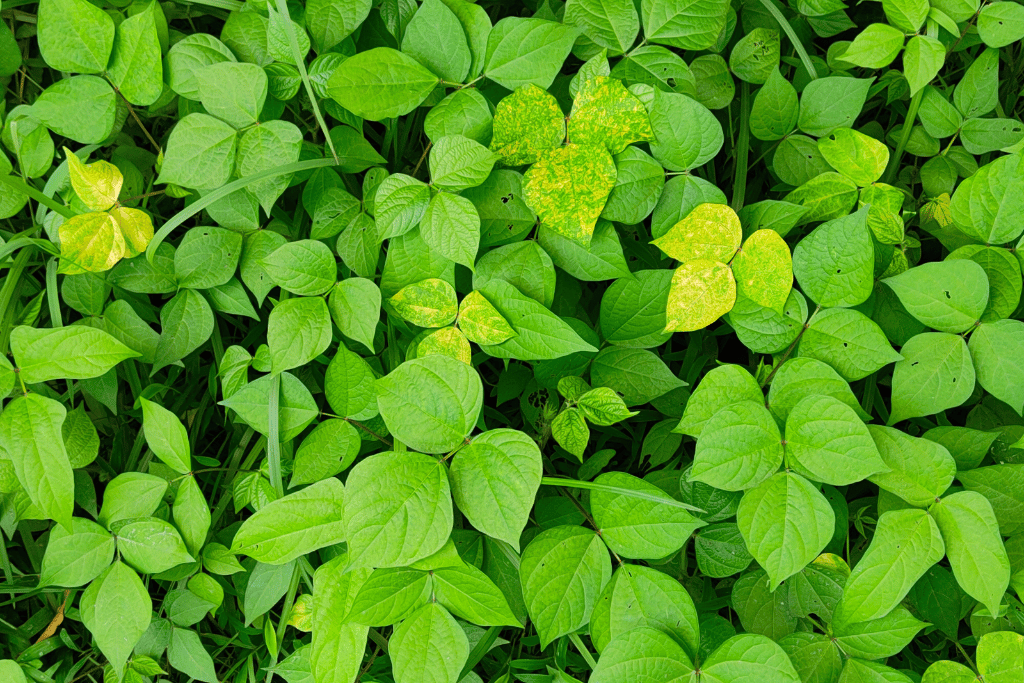
Poison ivy and Hog peanut can be tricky to tell apart, but there are a few nuances that can help you identify each plant.
The biggest difference between these two is the thickness of the stem – poison ivy has thick stems, whereas Hog peanut has thin, delicate-looking stems.
Additionally, poison ivy leaves have more pronounced vines, and their base is narrower, whereas Hog peanut leaves appear more rounded.
If you were to touch their leaves, poison ivy would feel smooth, while Hog peanut’s are slightly fluffy – though it goes without saying that touching the plants should be avoided!
So if you come across these two plants in nature, take a close look and remember these differences to help identify which one you’re dealing with!
Virginia Creeper
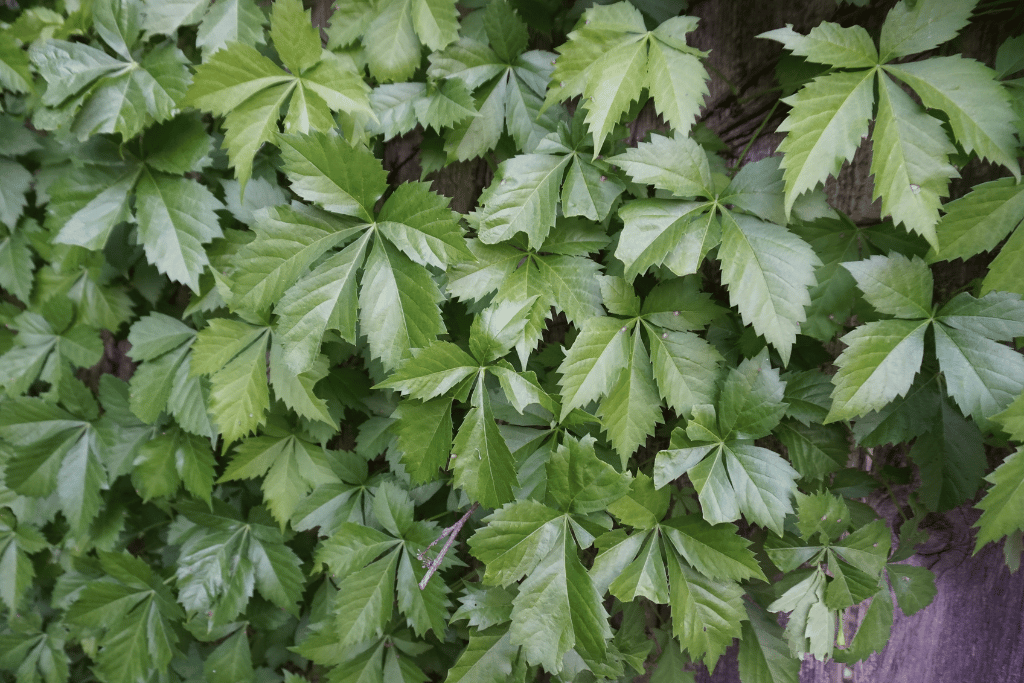
Virginia Creeper is one of the plants people confuse with the poison ivy the most. But they’re actually a lot more different than you’d think!
The scientific name of the creeper is Parthenocissus quinquefolia, which means ‘five-leaved’ and refers to the number of leaflets in a grouping – usually four or five, but occasionally three, which is where the confusion tends to stem from.
It’s one of the few 3 leaf plants that look like poison ivy!
While most of the time, this plant will just have five leaves, but you might come across the three-leaf version, too, so it’s good to keep an eye out for both!
Another key difference is that poison ivy leaflets have their own smaller stems, while creeper leaflets connect straight to the branch. Additionally, poison ivy has greenish-white berries, while Virginia creeper has deep blue berries.
One thing poison ivy and Virginia creeper do have in common is that their berries are not edible. If ingested, Virginia creeper berries can cause irritation and an upset stomach.
Virginia creeper vines also usually have a woodier texture than poison ivy vines, but it can be harder to tell with some varieties.
The creeper is also much faster-growing and thrives in a wide range of conditions, often used as an arch or trained to grow up walls in gardens, which isn’t usually the case with the poison ivy!
Jack-in-the-pulpit
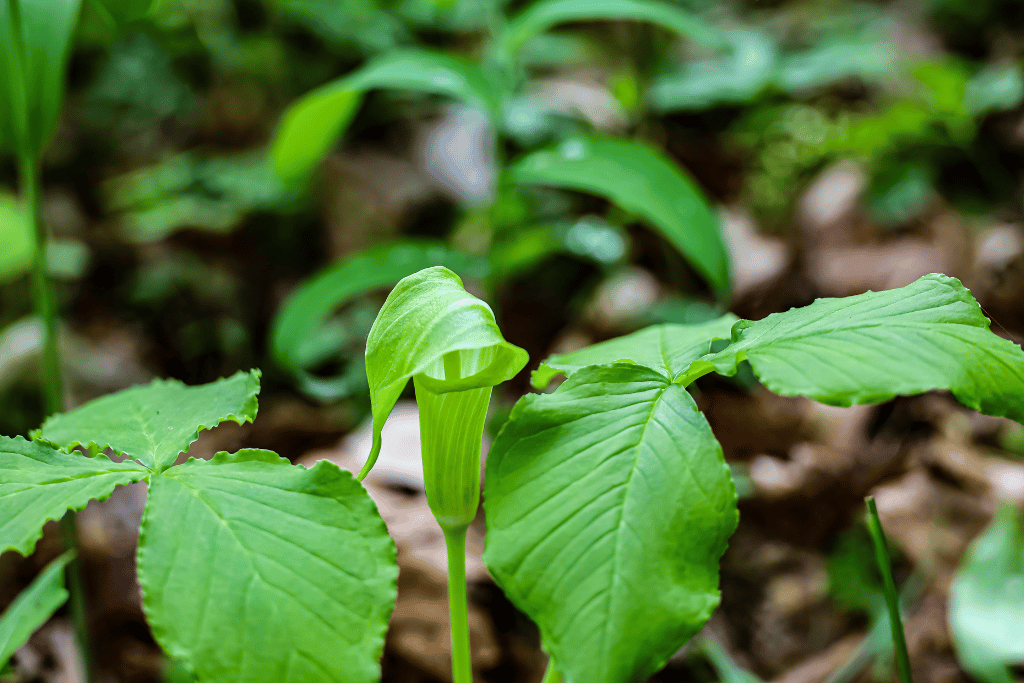
If you’re ever out in the wild and come across a plant that looks like poison ivy, don’t be too quick to judge! It may actually be Jack-in-the-pulpit.
Unlike poison ivy, this interesting plant has smooth leaves that grow atop long, upright stems and never alternate along a vine, as poison ivy does.
Jack-in-the-pulpit leaves are usually larger and wider than poison ivy, especially when mature.
To tell for sure, take a look at the center vein of the leaves – if it doesn’t reach all the way to the edge, you’ve got yourself some Jack-in-the-pulpit.
Plys, poison ivy doesn’t produce unique flowers on separate stems like Jack-in-the-pulpit does.
Plus, poison ivy berries are usually white or yellow in color, while Jack-in-the-pulpit produces small red berries in late summer.
Although normally found naturally in woodlands, its interesting displays make for a wonderful ornamental plant.
So if you ever come across something that looks like poison ivy, don’t forget to give it a closer look – it might be Jack-in-the-pulpit!
Boston Ivy
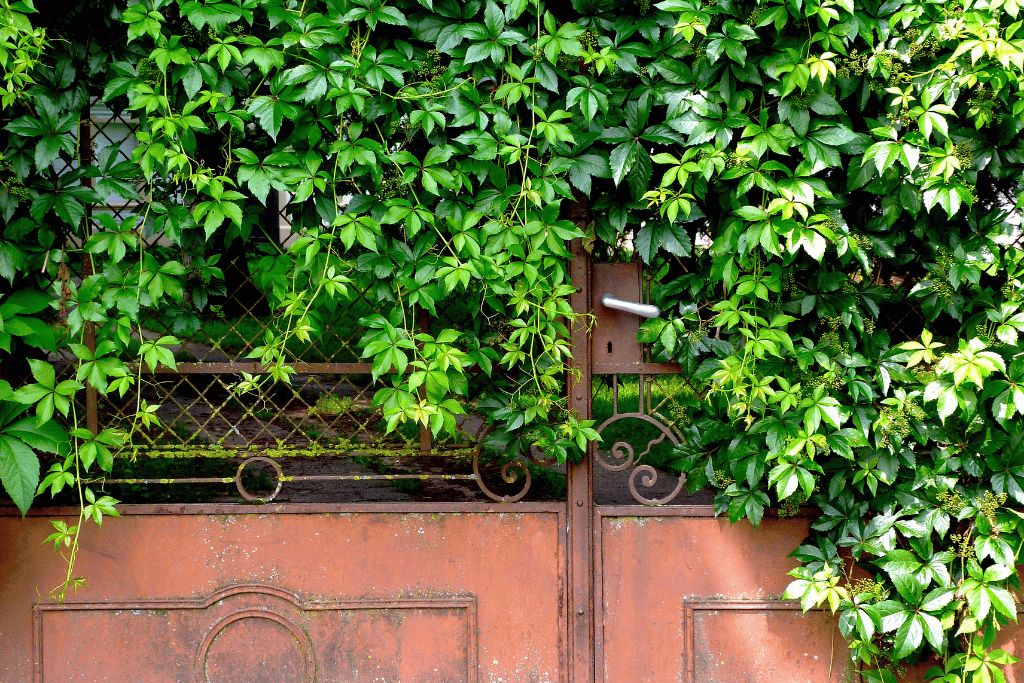
Knowing the difference between poison ivy and Boston ivy can be tricky, since both have a three-leaf pattern.
However, poison ivy leaves are always compound, whereas Boston ivy may come in either simple or compound forms.
That means poison ivy’s leaflets have a long stem in the middle, while Boston ivy’s leaflets have much shorter stems.
The leaves of poison ivy are also jagged and irregularly shaped, while the edges of Boston ivy’s leaflets are serrated.
Though poison ivy is more widely known for being hazardous, both plants can cause rashes if touched and are toxic when ingested.
So, it’s best to be extremely cautious when approaching poison ivy or Boston ivy in your garden. It’s important to handle both with care to avoid any potential health problems. If the plants end up growing in your garden, it might just be a good idea to remove them altogether to avoid accidental contact too!
Bush killer Vine
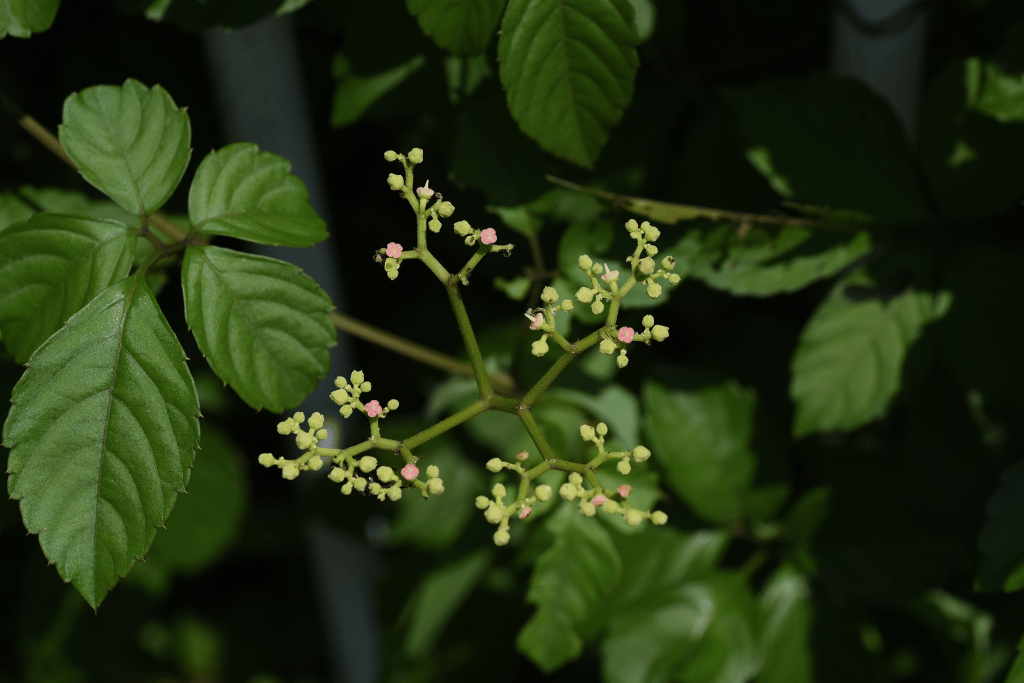
Bush killer vine is yet another plant that people are terrified of just because it looks like poison ivy.
Both plants have leaves that come in three leaflets, but poison ivy’s leaflets are all roughly the same size, whereas bush killer vine has five leaflets, with the center one longer than the others.
Poison ivy is also often more hairy or fuzzy in texture than the bush killer vine, while poison ivy’s leaflets usually have smooth edges and bush killer vine’s leaflets are jagged.
If you take a closer look, poison ivy will typically have small white bumps on its leaves that can be seen when they’re held up to the light.
These bumps have a chemical that can cause an itchy rash if you come in contact with poison ivy. Bush killer vine, on the other hand, doesn’t have these bumps, so touching it won’t cause any harm.
But if you’re confused between them, the better idea is just not to touch either to be totally safe!
Jewelweed
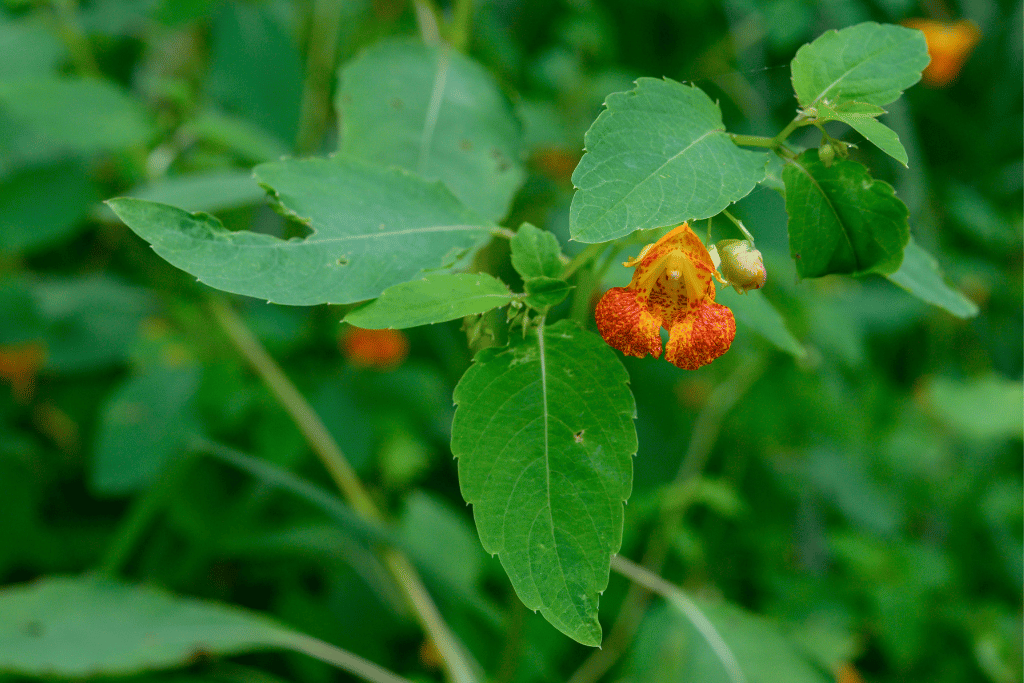
This is another contender in the most easily confused plants with the poison ivy competition. But it’s actually not that difficult to tell them apart if you know where you’re looking!
One of the best ways to distinguish poison ivy from jewelweed is by its leaf shape.
Poison Ivy has three leaflets that come together in a v-shape, while Jewelweed typically has multiple leaves on each stem and lacks the distinct “v” shape.
The color and texture of poison ivy can vary, but generally, it has a reddish hue to its stems, while jewelweed has lighter green colored stems.
In springtime, poison ivy will have small clusters of white flowers, while jewelweed produces bright orange blooms.
This is one of the best ways to distinguish poison ivy from jewelweed during this season.
Once you know what poison ivy looks like, you can spot the difference when a jewelweed is growing close by.
The most interesting part of poison ivy and jewelweed is that they are often found growing in the same area.
Jewelweed is known to be an antidote for poison ivy rashes, so it’s no surprise that these two plants commonly grow together.
The juice found inside the stem of jewelweed is often used to treat poison ivy rashes and itchy skin, making this plant an invaluable part of any poison ivy-infested area.
But you really need to keep an eye out to figure out which is which so you don’t accidentally end up doing more harm than good!
The Bottom Line
When it comes to poison ivy, the saying “Leaves of three, let them be” is a great way to remember what you’re looking for.
But there are some other plants that can look very similar and cause confusion when trying to identify poison ivy. It’s important to do your research and understand the differences in order to avoid an uncomfortable experience.
With the list of the ten most easily confused plants with poison ivy, you have your ultimate cheat sheet to make sure you don’t end up confusing an innocent plant with poison ivy! While poison ivy can be a nuisance, knowing which plants to look out for will help you better appreciate the outdoors without having to worry about breaking out in a rash hours later!



